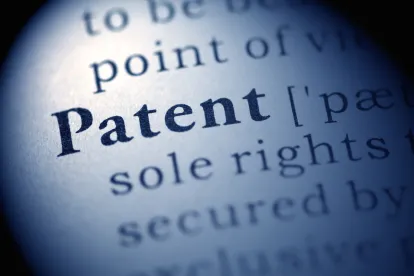Interpreting the language of the America Invents Act (AIA) continues to be a fascinating exercise. The effective date provisions of the AIA transition provisions § 3(n)(1) and § 3(n)(2) are no exceptions. This article discusses a recent Patent Trial and Appeal Board (“Board”) decision interpreting the language of § 3(n)(1). A second article (Part 2) discussing § 3(n)(2), which was not at issue in this case, will follow.
Holding
In Microsurgical Technology, Inc. v. Regents of the Univ. of Colorado, PGR2021-00026, Paper 12 (P.T.A.B. June 16, 2021), the Board found the University of Colorado’s U.S. Pat. No. 10,786,391 (“the ’391 patent”) eligible for post-grant review (“PGR”) but denied Microsurgical’s petition for PGR.
PGR Eligibility
The Board analyzed whether the ’391 patent was eligible for PGR. As set forth in AIA § 6(f)(2)A),[1] patents described in AIA § 3(n)(1) are eligible for PGRs. Section 3(n)(1) reads as follows (emphasis added):
(n) EFFECTIVE DATE. —
(1) IN GENERAL. — Except as otherwise provided in this section, the amendments made by this section shall take effect upon the expiration of the 18-month period beginning on the date of the enactment of this Act, and shall apply to any application for patent, and to any patent issuing thereon, that contains or contained at any time—
(A) a claim to a claimed invention that has an effective filing date as defined in section 100(i) of title 35, United States Code, that is [after March 15, 2013]; or
(B) a specific reference under section 120, 121, or 365(c) of title 35, United States Code, to any patent or application that contains or contained at any time such a claim.
An application filed after March 15, 2013 but claiming benefit of a filing date before March 15, 2013, is a “transition application.” The Board explained that “for a patent issuing from a transition application, eligibility for post-grant review depends on whether the patent contains or contained at any time a claim that lacks written description and enabling support in a priority application filed before March 16, 2013.” Microsurgical, Paper 12 at *15.
The application that issued as the ’391 patent was filed after March 15, 2013 but claims the benefit of the filing date of a provisional application filed April 24, 2012. Microsurgical argued that the ‘391 patent claims did not have written description support in the provisional application, which was the only priority application filed before March 15, 2013. Thus, in the absence of benefit of the filing date of April 24, 2012, Microsurgical argued that the ’391 patent was PGR-eligible under AIA § 3(n)(1).
In an attempt to avoid being “buffaloed” into a PGR proceeding, the University of Colorado statutorily disclaimed claims 3, 10, 15, and 18, which all had questionable written description support in the provisional application. The University relied on PTAB decisions addressing the impact of statutorily disclaiming claims in a different legal context and argued that the disclaimed claims should be treated as though they never existed in the patent and therefore could not be relied upon for determining PGR-eligibility.
The Board rejected the University’s argument. Noting that the cases cited by the University involved the issue of whether to institute PGR of disclaimed claims rather than PGR-eligibility, the Board noted that AIA § 3(n)(1) addresses PGR-eligibility and “turns on whether the application for patent (not simply the issued patent) ever contained, at any time, a qualifying claim.” Id. at *17.[2] It was undisputed that the disclaimed claims were previously part of the patent (and thus necessarily the application that issued into the patent), and thus such claims must be included in the analysis of PGR-eligibility. Id. at *18.
Considering the disclaimed claims, the Board determined that certain limitations in disclaimed claims 3 and 15 were not supported in the provisional application. Therefore, the ’391 patent (and the application from which it issued) was deemed to have met the statutory requirement that it “contains or contained at any time a claim” with an effective filing date after March 15, 2013. Accordingly, the Board determined that the ’391 patent was eligible for PGR.
Unlike disclaimed claims 3 and 15, the Board determined that the non-disclaimed claims were entitled to the benefit of the filing date of the provisional application. That meant that the reference relied upon in Microsurgical’s PGR petition was not available as prior art, leading the Board to conclude that Microsurgical had not shown it was more likely than not that the non-disclaimed claims of the ’391 patents were invalid for indefiniteness or lack of written description.[3] Accordingly, the Board denied Microsurgical’s PGR petition.
Takeaways
In an AIA transition application, the “effective filing date” (EFD) provisions of AIA § 3(n)(1) control the issue of whether the application is subject to AIA or pre-AIA law. If the application contains or contained at any time an AIA claim, i.e., a claim not having benefit of a pre-AIA EFD, all the claims are subject to AIA law, even if some claims of the application are entitled to a pre-AIA EFD. Although all claims in such an application are subject to § 102 and § 103 analyses viewed through the lens of AIA,[4] prior art is still applied on a claim-by-claim basis and different claims in the same application may be entitled to different EFDs.
Patent drafters should beware that they may unintentionally subject transition applications and patents issuing from them to AIA provisions, such as PGRs. See, e.g., US Endodontics, LLC v. Gold Standard Instruments, LLC, PGR2015-00019. Some call this “foot-faulting” into the AIA. This happens by introducing a claim that does not have a pre-AIA EFD. The grounds available to challenge claims in a PGR are broader than in inter partes reviews (IPRs), and the scope of available prior art is larger both geographically and temporally against claims in the transition application. Moreover, according to the PTAB so far, a patent owner cannot negate PGR-eligibility by canceling a claim that does not have a pre-AIA EFD.
Practitioners reviewing patent portfolios may want to evaluate whether there are (or ever were) claims that do not have a pre-AIA EFD in a patent issuing from a transition application to determine whether certain AIA provisions apply.
Stacy Lewis, Law Clerk at Finnegan, also contributed to this article.
[1] (f) REGULATIONS AND EFFECTIVE DATE. —
***
(2) APPLICABILITY.—
(A) IN GENERAL.—The amendments made by subsection (d) [post-grant reviews] shall take effect upon the expiration of the 1-year period beginning on the date of the enactment of this Act and, except as provided in section 18 and in paragraph (3), shall apply only to patents described in section 3(n)(1).
[2]See also, RetailMeNot, Inc. v. Honey Science Corp., PGR2019-00060, Paper 17 (P.T.A.B. Mar. 10, 2020) (“[t]he provision of the AIA that defines which applications and patents are subject to it provisions looks beyond simply the claims in the patent and considers the claims contained at any time in the application for patent”).
[3]“[W]e find that the non-disclaimed claims of the ’391 patent are entitled to the April 24, 2012 priority date of the ’611 provisional application. Therefore, Baerveldt, which has an earliest possible priority date of February 10, 2017, is not prior art to the nondisclaimed ’391 patent claims. For this reason, we find that Petitioner has not shown that it is more likely than not that the claims of the ’391 patent are invalid for anticipation and/or obviousness over Baerveldt.” Microsurgical, Paper 12 at *44.
[4]See AIA § 3(n)(1): [AIA provisions] “shall apply to any application for patent, and to any patent issuing thereon[.]” (emphasis added).








 />i
/>i

